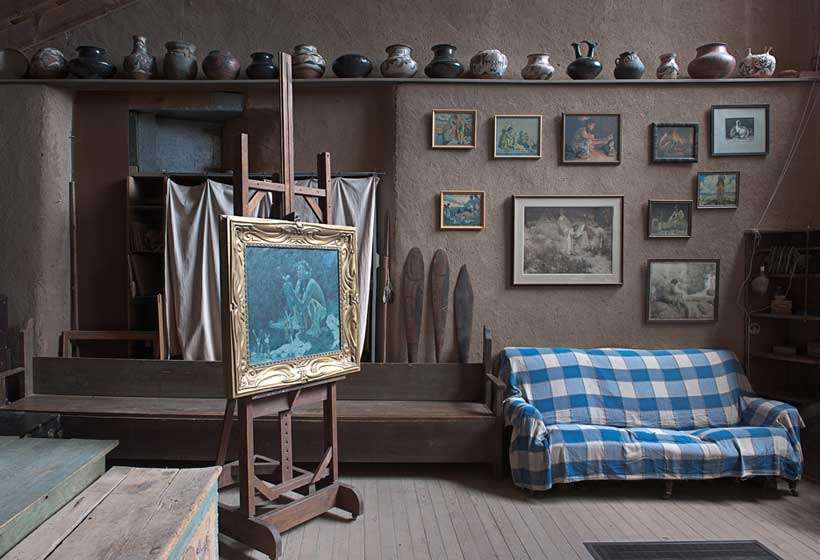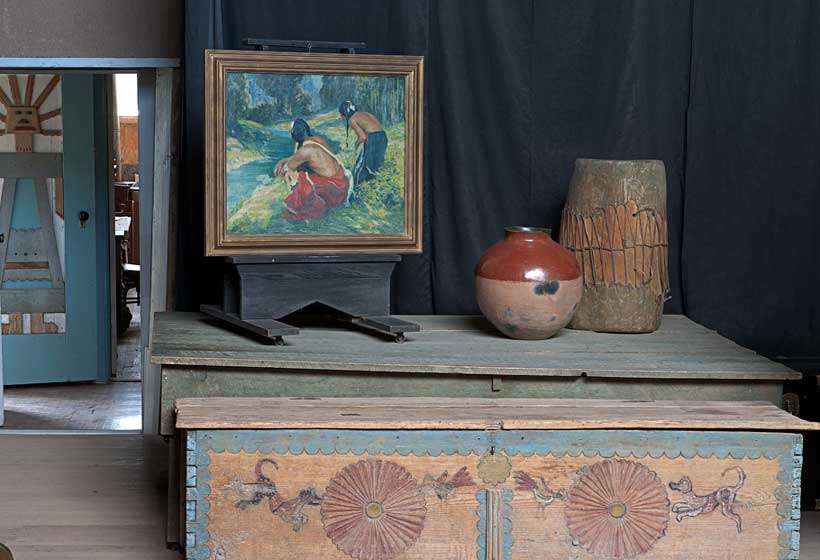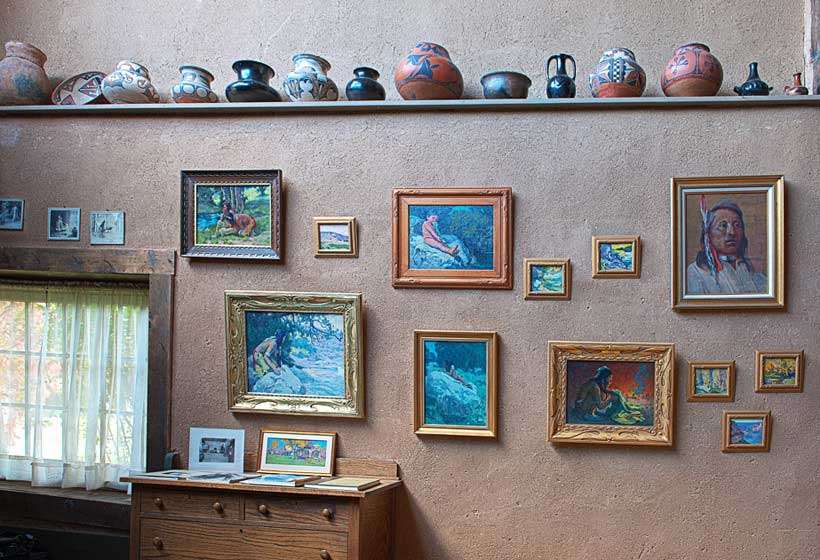Studios / Couse
Couse Studio
The property purchased by the Couses on Kit Carson Road in 1909 appealed to them because there was room to add on a spacious studio. Couse’s design for the addition was ingenious. He removed the south wall of the original adobe house and extended the room to double its size. A large window facing true north was built above the pre-existing roof line, from the top of which the new roof sloped dramatically to the south. He added an alcove at the southeast corner with an adobe fireplace that provided an ideal setting for painting some of his famous firelight pictures. In the northwest corner he built in a small dark room in which to process his photographs. The area where the old walls met the new upward extension provided a shelf for the display of his Indian pottery collections of over 100 vessels. A large mobile platform on which he could pose his models occupied the south end of the room.
This was the ideal studio he had always dreamed of. A wide porch wrapped around the outside with built-in benches on which to sit. This was a favorite spot for the early Taos artists to gather, discuss their work, and enjoy the view across Taos valley.
The studio today appears as if the artist had just stepped out.
Couse was called “Green Mountain” by his Taos Pueblo friends, partly as an honor relating him to the sacred Taos Mountain, but in addition recognizing his rotund body in its ubiquitous green sweater.










